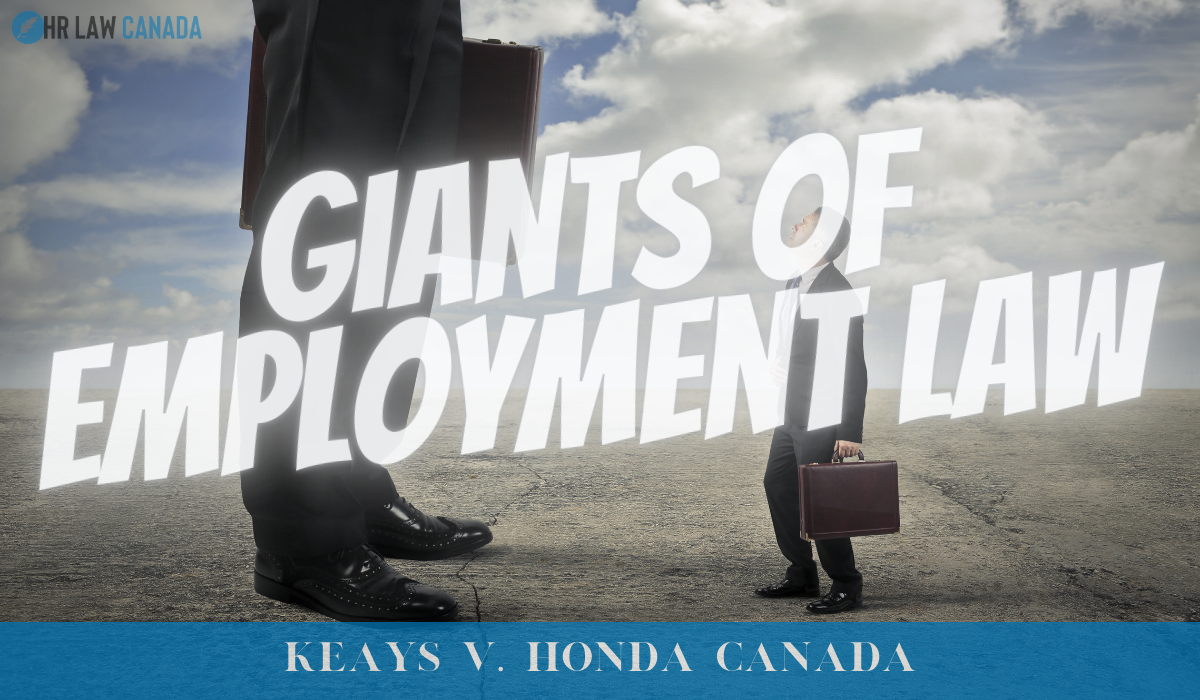Canadian employment law has undergone several transformative moments over the years, with court rulings setting new precedents and reshaping established norms.
Among these, the Supreme Court of Canada’s decision in Keays v. Honda Canada is particularly notable. This judgment, especially in the realm of wrongful dismissal and damages, dramatically changed the legal perspective and implications for both employers and employees.
The Background of the Case:
David Keays had a 14-year working relationship with Honda Canada. Afflicted with chronic fatigue syndrome, Keays took several leaves of absence. Honda, perturbed by Keays’ frequent absences, demanded that he produce a doctor’s note for each absence. Challenging this requirement led to Keays’ dismissal, prompting him to sue Honda for wrongful dismissal.
The Court’s Findings:
The initial trial was favorable for Keays. He was awarded 15 months’ pay as compensation for wrongful dismissal. Additionally, in recognition of the alleged harsh manner of his termination, the court granted him a substantial $500,000 in punitive damages. However, when escalated to the Supreme Court of Canada, while his wrongful dismissal was upheld, the substantial punitive damages were struck down.
Key Insights from the Judgment:
- Punitive Damages: Keays v. Honda Canada provides a pivotal stance on punitive damages. The Supreme Court was explicit that punitive damages should be reserved for instances where the employer’s conduct during the dismissal is flagrantly “malicious and outrageous.” The decision set a precedent that punitive damages shouldn’t be awarded lightly.
- Duty of Good Faith: This case underscored an employer’s duty to maintain good faith during the termination process. Violation of this duty can lead to damages, but these should reflect actual harm and not serve as punishment, unless egregious conduct is evident.
- Damages for Mental Distress: The court acknowledged the possibility of damages for mental distress, but with a caveat. Such damages should be given only if the dismissal caused significant mental distress beyond the ordinary emotional turmoil of losing a job. There needs to be demonstrable evidence that the employer’s actions caused a severe and extended disruption exceeding ordinary reactions.
The Impact on Employment Law in Canada:
- Redefining Punitive Damages: The Keays decision clarified and limited the scope for claiming punitive damages in wrongful dismissal suits. By setting high benchmarks for proving malicious intent, it effectively deterred frivolous claims.
- Emphasizing Ethical Treatment: The verdict highlighted the need for employers to maintain ethical standards during the dismissal process. Even if punitive damages were made harder to claim, the verdict was a reminder of the importance of good faith in employer-employee relations.
- Wallace and Keays: The ‘Wallace bump,’ a concept arising from an earlier Supreme Court case, Wallace v. United Grain Growers Ltd., laid the foundation for employers’ duty of good faith in dismissals. While Wallace allowed for an extension in the notice period for bad faith dismissals, Keays refined and clarified the line between compensatory and punitive damages.
In Summary:
The Supreme Court’s decision in Keays v. Honda Canada, especially when seen in conjunction with the Wallace bump, provides a nuanced and comprehensive roadmap for employment terminations. By setting clearer boundaries for punitive damages and emphasizing ethical conduct, it has ensured a more balanced and fair landscape for both employers and employees in Canada.






